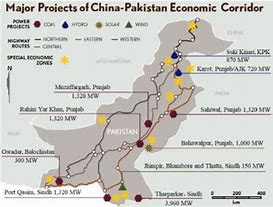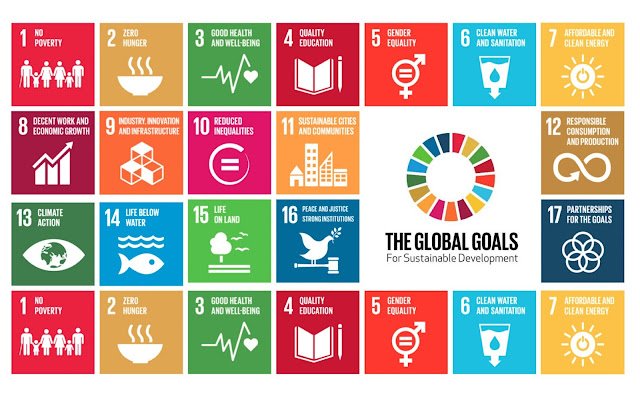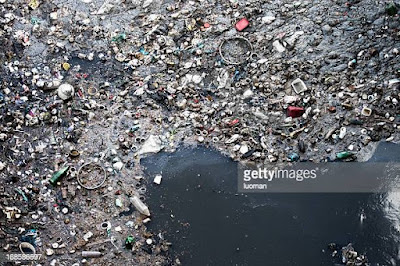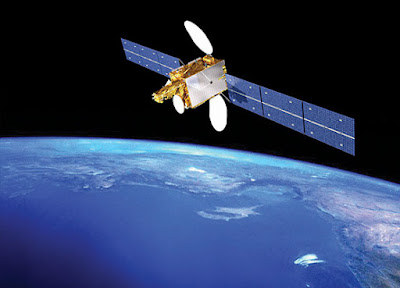The China-Pakistan Economic Corridor (CPEC) is one of the six economic corridors that form part of China’s Belt and Road Initiative (BRI). The BRI is a global infrastructure and investment initiative aimed at promoting economic connectivity and cooperation between China and the rest of the world. The other five economic corridors under the BRI are:
- Bangladesh-China-India-Myanmar Economic Corridor (BCIM)
- China-Central Asia-West Asia Economic Corridor (CCWA)
- China-Mongolia-Russia Economic Corridor (CMREC)
- China-Indochina Peninsula Economic Corridor (CITER)
- New Eurasian Land Bridge Economic Corridor
The China-Pakistan Economic Corridor (CPEC) was launched in 2013 and it is reported that China invested $62 billion in the project until 2020. The investment was aimed at building infrastructure and energy projects in Pakistan, and it was expected to boost the country’s economic growth. However, the actual investment amount may have changed since then. The CPEC aims to connect Gwadar Port in southwestern Pakistan to China’s northwestern region of Xinjiang, through a network of highways, railways, and pipelines. The project is expected to promote economic growth, increase energy and infrastructure development, and enhance regional connectivity between China and Pakistan. The China-Pakistan Economic Corridor (CPEC) is seen as a framework for regional connectivity that has the potential to bring economic benefits to multiple countries in the region, including China, Pakistan, Iran, Afghanistan, and the Central Asian Republics. The focus on improving transportation and communication links, as well as promoting cultural, academic, and business exchanges, is intended to foster greater integration and cooperation among the countries involved.
Additionally, the development of energy projects as part of CPEC is expected to help meet the growing energy needs of the region, while also creating new opportunities for economic growth. By promoting a “win-win” model of cooperation, it is hoped that the CPEC will help to create a more harmonious and prosperous future for all involved.
Regional Connectivity
The CPEC project is expected to bring increased economic cooperation, greater regional connectivity, and improved living standards to the countries involved. The focus on improving transportation and communication links under CPEC is intended to foster greater integration and cooperation among the countries involved, which can help to increase the flow of goods, services, and people across borders. By promoting a “win-win” model of cooperation, it is hoped that the CPEC will help to create a more harmonious and prosperous future for all involved. Countries that are expected to benefit from CPEC are:
- China: The CPEC project provides China with an alternate route for its energy imports, reducing its dependence on the Strait of Malacca, which is prone to pirate attacks and other security threats.
- Pakistan: The project is expected to bring in billions of dollars in foreign investment, create new job opportunities, and spur economic growth in Pakistan. The development of the Gwadar Port and the creation of a trade and energy corridor through the country is expected to have a transformative effect on the country’s economy.
- Afghanistan: CPEC is expected to increase trade and investment opportunities for Afghanistan and help integrate it into regional and global value chains.
- Iran: CPEC is expected to improve regional connectivity and boost trade between Iran and Pakistan, which could lead to greater economic cooperation and integration in the region.
- Central Asian Republics: The development of the trade and energy corridor through Pakistan is expected to provide the Central Asian Republics with a new route for their exports and improved access to markets in South Asia and the Gulf region.
Afghanistan is already importing food and other essential items through the Gwadar port, which is part of the CPEC. This is an example of how the initiative can help to enhance trade and commerce between countries in the region, promoting economic growth and job creation. It started shipping cargo to Afghanistan in the first half of 2020. The cargo, which weighed about 20,000 tonnes, included wheat, sugar, and fertilisers, and was expected to create about 1,000 jobs.
Special Economic Zones
Nine Special Economic Zones (SEZs) have been established within Pakistan as part of the China-Pakistan Economic Corridor (CPEC) initiative. SEZs are designated areas designed to promote economic growth and development by offering favourable investment and trade conditions. The SEZs established under the CPEC initiative aim to create investment opportunities, foster economic growth, and promote job creation. These zones are expected to play a key role in supporting the development of various industries, including agriculture, manufacturing, and services.
The establishment of these SEZs is seen as a significant step towards promoting economic development and growth in Pakistan. By attracting investment and supporting the development of various industries, the SEZs are expected to help create new job opportunities, boost economic growth, and improve the standard of living for the people of Pakistan.
The nine Special Economic Zones (SEZs) that have been established within Pakistan as part of the China-Pakistan Economic Corridor (CPEC) initiative are:
- Dhabeji SEZ
- Allama Iqbal Industrial City, Faisalabad
- Rashakai SEZ
- M3 Industrial City, Faisalabad
- Bostan Industrial Park, Balochistan
- Moqpondass SEZ, Gilgit Baltistan
- Sukkur SEZ
- Bawaristan SEZ, Gilgit Baltistan
- Dera Ismail Khan SEZ
These SEZs are expected to play a key role in attracting investment, fostering economic growth, and promoting job creation in Pakistan. They are designed to provide favourable investment and trade conditions for businesses, including tax incentives, streamlined regulations, and access to infrastructure and services. By attracting investment and supporting the development of various industries, these SEZs are expected to help create new job opportunities, boost economic growth, and improve the standard of living for the people of Pakistan.
Energy Projects under CPEC
As part of the China-Pakistan Economic Corridor (CPEC) initiative, private partnerships are involved in the construction of energy infrastructure worth approximately $33 billion. This investment aims to address Pakistan’s energy shortage, which has been a major hindrance to its economic growth and development.
The energy projects being developed under CPEC include coal, hydropower, wind, solar, and other renewable energy sources. These projects are expected to add substantial capacity to Pakistan’s energy mix, providing a more stable and reliable power supply to support economic growth and development.
By leveraging private investment and partnerships, the energy projects under CPEC are expected to not only improve the energy supply in Pakistan, but also create job opportunities, spur economic growth, and improve the standard of living for the people of Pakistan.
Here is a list of some of the energy projects under the China-Pakistan Economic Corridor (CPEC) initiative:
- Port Qasim Power Plant
- Sahiwal Coal Power Plant
- Thar Coal Power Plant
- Gadani Power Park
- Karot Hydro Power Plant
- Suki Kinari Hydro Power Plant
- Azad Pattan Hydropower Project
- Matiari-Lahore Transmission Line
- Quaid-e-Azam Solar Power Park
- Dawood Wind Farm
These are some of the major energy projects being developed under the CPEC initiative. There may be other smaller-scale projects being developed as well. These projects aim to improve energy supply, spur economic growth, and create job opportunities in Pakistan.
Seaport Links
The China-Pakistan Economic Corridor (CPEC) links the seaports in Gwadar and Karachi with northern Pakistan through the construction of highways and railways. These projects aim to modernize the transportation links and provide a more efficient and reliable transportation network that can support economic growth and development in the region. The upgraded transportation infrastructure will facilitate the flow of goods, people, and capital, promoting trade, investment, and regional integration. In addition, the development of Gwadar Port as a regional hub is expected to bring numerous economic benefits to Pakistan, including job creation, increased trade, and improved connectivity with neighbouring countries.
Transportation Projects
The 118 km Karakoram Highway (KKH) Phase-II (Havelian-Thakot section) and the 392 km Peshawar-Karachi Motorway (Sukkur-Multan section) are two of the major transportation projects under the China-Pakistan Economic Corridor (CPEC) initiative. The KKH Phase-II is a key part of the China-Pakistan Economic Corridor (CPEC) and will improve transportation links between China and Pakistan. The completion of the 392 km Sukkur-Multan section of the Peshawar-Karachi Motorway has improved connectivity and reduced travel time between the two cities. These projects are aimed at improving transportation infrastructure, promoting economic growth, and enhancing regional connectivity in Pakistan.
The China-Pakistan Economic Corridor (CPEC) transportation network includes highways, railways, and airports that pass through several major cities in Pakistan. Some of the major cities through which the CPEC highways pass include:
- Gwadar
- Karachi
- Hyderabad
- Sukkur
- Multan
- Lahore
- Rawalpindi
- Islamabad
- Peshawar
- Quetta
These cities form the main backbone of the transportation network under CPEC and are connected by the highways and other transportation routes, promoting economic activity, trade, and regional integration in Pakistan.
Airports and Railways
Under the China-Pakistan Economic Corridor (CPEC) several airports and railway lines have been constructed or are under construction. Some of the notable ones include:
Airports:
- Gwadar International Airport
- New Islamabad International Airport
- U Khan International Airport, Quetta
Railways:
- ML-1: Upgradation of Mainline-1 railway line
- Havelian Dry Port: Development of Havelian Dry Port near Havelian railway station
- Karachi Circular Railway: Revitalization of Karachi Circular Railway
- ML-2: Lahore-Karachi railway line
- ML-3: Islamabad-Peshawar railway line
Please note that these are some of the major airports and railway lines being developed under the CPEC framework and the list is not exhaustive.
The Orange Line Metro Line (OLMT) in Lahore, Pakistan, is a major infrastructure project that has been completed under the China-Pakistan Economic Corridor (CPEC), which is part of the Belt and Road Initiative (BRI) launched by President Xi Jinping. The completion of the OLMT represents a significant milestone in the development of Pakistan’s transportation infrastructure, as it is the country’s first electric-powered public transport project. By improving transportation and communication links, the OLMT is expected to help boost economic growth in Lahore and make it easier for people to travel within the city. The completion of this project is a testament to the progress that has been made under CPEC and highlights the potential for further cooperation and investment between China and Pakistan under the Belt and Road Initiative. By improving infrastructure and electricity supply, the projects have created employment opportunities for local people, which has helped to boost economic growth in the country. The completion of these projects is also expected to have a positive impact on the gross domestic product (GDP) of Pakistan, contributing 1 to 2 percentage points to the country’s overall economic growth. This highlights the potential for further cooperation and investment between China and Pakistan under the Belt and Road Initiative, as well as the benefits that such initiatives can bring to the countries involved. By promoting economic growth and job creation, these projects have the potential to help improve living standards and create a more prosperous future for the people of Pakistan.
Jobs in Pakistan
According to some reports, the China-Pakistan Economic Corridor (CPEC) projects have created a significant number of jobs in Pakistan. The exact number of jobs created varies depending on the source and the period considered, but some estimates put the number at around 2,320,000 jobs across the country.
It’s worth noting that the actual number of jobs created by the CPEC projects is difficult to quantify, as it depends on a variety of factors, such as the specific projects involved, the level of investment, and the local economic conditions. However, it is widely acknowledged that the CPEC projects have had a positive impact on the employment situation in Pakistan, and have helped to create new opportunities for workers in a variety of industries.
The CPEC Development during Imran Khan Regime
The China-Pakistan Economic Corridor (CPEC) has seen significant development from 2018 to 2022 during Imran Khan’s tenure. During this period, various projects under the CPEC framework were initiated, completed, or ongoing. Some of the notable developments include:
- Energy Projects: Several energy projects were initiated or completed under the CPEC, including the construction of coal-fired power plants, hydropower projects, and solar energy initiatives. These projects aimed to address the energy shortage in Pakistan and improve the country’s energy mix.
- Transportation Infrastructure: The construction of highways, expressways, and other transportation infrastructure projects was initiated and completed, aimed at improving connectivity and reducing travel time between major cities in Pakistan.
- Gwadar Port Development: The development of the Gwadar port continued during this period, including the construction of additional berths, the upgrading of infrastructure and facilities, and the development of a free trade zone in the port city.
- Industrial Cooperation: During this period, the two countries also focused on promoting industrial cooperation, including the development of Special Economic Zones (SEZs) and the transfer of technology and knowledge from China to Pakistan.
- Agricultural Cooperation: China and Pakistan also focused on promoting agricultural cooperation, including the development of new agricultural technologies, the transfer of knowledge and skills, and the establishment of agriculture demonstration centres.
In summary, the period from 2018 to 2022 saw significant progress in the development of the China-Pakistan Economic Corridor and the realization of its potential to bring economic prosperity to Pakistan and the region.

Recent Developments
The close relationship between China and Pakistan and their commitment to advancing the China-Pakistan Economic Corridor (CPEC) project, including the development of the Gwadar port, is a positive sign for the future success of the initiative. The two countries have a long history of friendship and cooperation and have consistently supported each other during times of global crisis. China has given Pakistan high priority in its neighbouring diplomacy, recognizing the importance of their relationship and the potential for strategic cooperation through initiatives such as CPEC. The meeting between Prime Minister Muhammad Shehbaz Sharif and President Xi Jinping in November 2022, as well as other high-level visits and discussions between the two countries, demonstrate the commitment of both nations to advancing the CPEC project and realizing its potential to drive economic growth and regional connectivity. The commitment of both China and Pakistan to further advance the China-Pakistan Economic Corridor (CPEC) project and make full use of its potential is a positive sign for the future of the initiative.

Conclusion
By focusing on high-quality Belt and Road cooperation and other important infrastructure projects, the two countries aim to boost interconnected development in the region and drive economic growth. The construction of auxiliary infrastructure for the Gwadar port is an important aspect of the CPEC project, as it will unlock its potential as a transportation hub in South Asia. The port is expected to generate significant transit revenue and create many job opportunities for locals, contributing to the economic prosperity of Pakistan, particularly in the Balochistan province.
Some estimates say CPEC will employ the Gwadar port to develop transit revenue of US$ 70 billion annually. It is important to note that the actual transit revenue generated by the Gwadar port and CPEC is subject to various factors such as the global economy, trade agreements, geopolitical relations, and other market conditions. These estimates should be considered as projections and not guarantees. Despite this, the potential for economic growth and job creation as a result of the development of the Gwadar port and the China-Pakistan Economic Corridor is significant and has the potential to bring economic prosperity to the region. The existing programs under the China-Pakistan Economic Corridor (CPEC) are focusing on cooperation in various sectors, including livelihood, industry, and agriculture. The goal is to turn CPEC into a “demonstration project of high-quality Belt and Road Initiative (BRI) development,” which will bring more benefits to China, Pakistan, and the region as a whole. Overall, the CPEC is expected to play a major role in driving economic growth and development in Pakistan, as well as promoting regional connectivity and cooperation with China and other countries in the region.











2 Comments